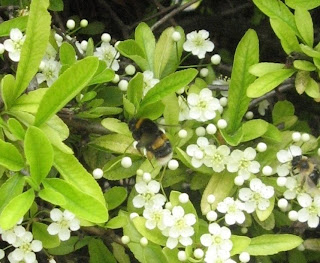
A whole post about butterflies and four photos without a butterfly in sight? Unfortunately, that's the point. I've hardly seen any this year.
Have you got butterflies in your gardens at the moment? When I was in London at the beginning of June I didn't see one, and here in Milan they are still very few and far between, despite the fact that there's plenty on the balcony to attract them. In the last week I've seen one or two fluttering around, but so far there's been no caterpillar damage at all - whereas by the beginning of June the hollyhock are usually lacy with holes and the caterpillarium is swarming with inhabitants munching their way through anything I've put in there.

Bad news. You may not like the caterpillars chomping at your prize flowers and veg, but they're an essential part of the ecosystem. Birds eat caterpillars, especially when they're raising their chicks, and the adult butterflies - apart from being a beautiful addition to the garden - are pollinators. Not the best maybe, but they play their part. No pollinators? No plants next year.
So why have they disappeared? I suspect it was the particularly hard winter we had. Here in Milan it went down to - 14°C one night. That's less than 7°F.
Butterflies either hibernate in the winter, or over-winter in chrysalis form. But I suspect that with temperatures that cold, a lot just didn't make it.
Which brings me to the good news. One type that I've not seen at all on the balcony this year is the dreaded Geranium Bronze Butterfly (Cacyreus Marshalli), which attacks both geraniums and pelargoniums and usually starts being a problem in May.

I'd decided not to bother with pelargoniums of any sort at all this year. Over the last couple of years I'd lost all those that I had to the GBB. It started slowly, with a couple being killed off each year, but then each year it got worse and worse, until not only had all the plants I'd had for years been destroyed but also any that I bought new would be dead within a couple of months. So no more, I said. The only way to solve the problem is not to buy them. And I didn't. Well, not for the house anyway. But for the office, I couldn't resist ...
And they're fine. No sign of public enemy number two (number one is red spider mite - and even that has not been quite so virulent as usual this year). They're thriving, keep bursting into flower and making me wish I'd bought more.
GBB is native of South Africa, so the idea that they couldn't survive the excessive cold does make sense. Hurray - perhaps that will check their advance through southern Europe a bit.

There is another possibility though. It could just be that they have hidden interests that entomologists have never suspected. And so they've all gone home to watch the football ...



















